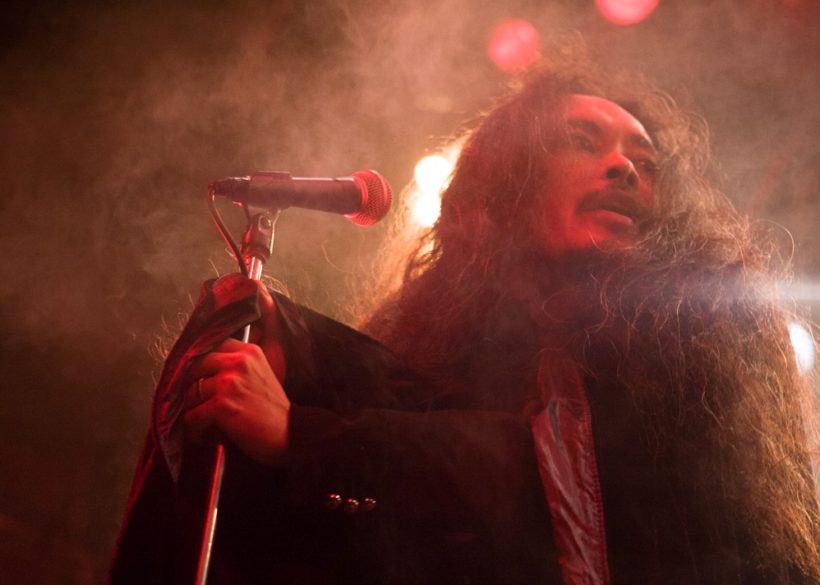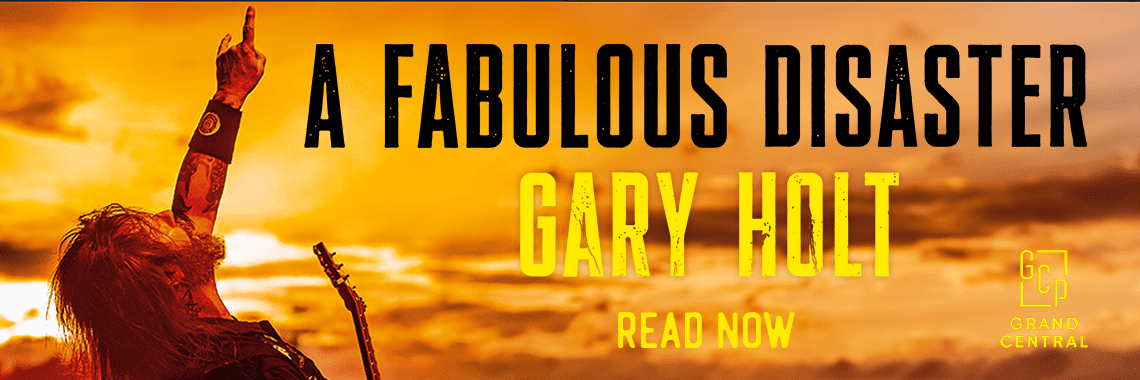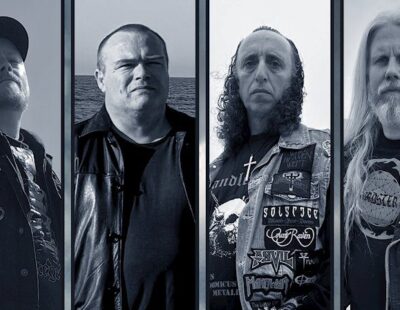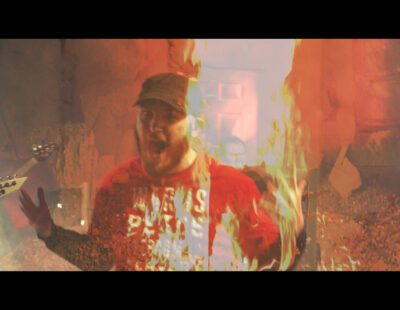
It’s been over 20 years since Sigh’s debut album dropped in 1993. Not surprisingly, not only has the extreme music landscape changed since then, but so has the Japanese outfit’s musical output. To celebrate the release of its tenth LP, Graveward, frontman Mirai Kawashima decided to take us back even farther–to the ’80s to be specific–to discuss five metal albums from that decade that broadened the definition of extreme metal.
We’ll let him take it from here:
“As you may know, rock music was very adventurous, even in the early days. If you listen to works by the Beatles, the Beach Boys, the Rolling Stones and some other so-called ‘psychedelic rock’ albums released in the late ’60s, you can easily tell that. New sounds were always being sought after and the ‘unusual’ instruments from the then state-of-the-art keyboards such as Minimoog, mellotron, Fender Rhodes, clavinet, etc., to some ethnic ones like sitar and tabla, were incorporated in rock music. The situation was the same with heavier music. You know how important Jon Lord’s Hammond organ was in Deep Purple’s music. You know how adventurous Led Zeppelin was. And yes, Black Sabbath was almost ‘anything goes’ with albums like Sabbath Bloody Sabbath and Sabotage. Piano, mellotron, Minimoog and even flute! Surely guitar, bass and drums are the basic format for rock music, but those keyboards, strings, brass and sometimes even sitar could be once considered as quasi-basic instruments.
However, when the first form of extreme metal was born as thrash metal in the early ’80s, keyboards and other ‘unusual’ instruments were considered to be rather wimpy and a taboo for a while. Why? I have two assumptions for the reason behind this. First, the musical style of early thrash metal was too atonal to embrace instruments like keyboards. I wouldn’t call it completely atonal, but obviously it isn’t easy to set the tonality or set the chord behind that riff-oriented music, I really do not think there’s room to add keyboards to early stuff by Venom, Slayer, Metallica, Kreator, Destruction or whoever. Even if you managed it, it’d sound extremely uncool. Second is the image of the keyboard/synthesizers. As digital synthesizers saturated [rock music], their sound became the symbol of new wave and disco stuff, which heavy metal fans detested. The early ’80s synthesizer’s sound is often taken as uncool even today. It’s so digital, plastic, cold and inhuman. It conflicts with the power that heavy metal has. That’s understandable.
The big change came in 1987. I believe 1987 was the most prolific and the most important year in the history of extreme metal. Here are a few examples of the releases in 1987: Celtic Frost’s Into the Pandemonium; Bathory’s Under the Sign of the Black Mark; Testament’s The Legacy; Napalm Death’s Scum; and Death’s Scream Bloody Gore. Thrash metal was still well and alive. And in this list, you can see that new forms of extreme metal, namely death metal, grindcore and black metal, were ready to explode. 1987 was the crossroad of every form of extreme metal. As for broadening the definition of extreme metal, I have to pick up the first two.”
You can pick up a copy of Graveward here (CD) or here (bandcamp).
Celtic Frost–Into The Pandemonium (1987)
I don’t think you need an explanation for this. Obviously the first “anything goes” album in extreme metal history. Celtic Frost had experimented with unusual elements such as timpani, french horn and female operatic chorus even before this; however the experimentation on Into the Pandemonium belongs on another level. It’s got everything: strings, brass, rhythm machine, female chorus, etc. According to the book Are You Morbid?, Tom G. Warrior wrote that Dead Can Dance and The Sisters of Mercy were the big inspiration on this. However, I am quite sure his real source was Christian Death. After this, Celtic Frost tried to become a LA metal band and failed. Surely it was a big challenge, but mixing metal and goth rock in the middle of the ’80s was an even bigger challenge! Back then, some people did not get this importance (Metal Forces gave this 0/100), but now nobody can deny that this opened the door for the anything-goes direction in extreme metal.
Bathory–Under The Sign Of The Black Mark (1987)
This is not as bold as Into the Pandemonium, but still this set a cornerstone in the history of extreme metal. This is not only the prototype of the ’90s second wave of black metal, but its completed form–the use of synthesizers, vocal style, guitar tone, monotonous drumming, and even the bad production. Some of these must have been not intentional, but they set the norm for sure. This album showed that synthesizers could create an evil atmosphere if used in a proper way (probably the guitar synthesizer was used on this). Quorthon even had an idea to hire a real girls choir and 14th century instruments. If it had come true, the album could have been even more adventurous. Due to the rise of death metal and grindcore, a few years were required for people to become aware of the importance of this album, but now everybody knows how much today’s black metal owes to this.
Although not as well-known as these two albums, a few adventurous extreme metal albums were also produced in the late ’80s:
Warfare–A Conflict Of Hatred (1988)
In my opinion, Warfare is the most underrated thrash metal band in the world. Their Metal Anarchy album, released in 1985, always ranks in my all-time top five thrash metal albums. Actually their musical transition is rather weird. They started as a punk/metal thrash band and ended up as a Hammer Films inspired goth metal band. And this fourth album of theirs, A Conflict of Hatred, is somewhere in between. Still, it’s pretty much thrashy but it features violin and saxophone, which was completely exceptional back in the days. This is the most underrated album by the most underrated thrash band.
Bulldozer–Neurodeliri (1988)
In the late ’80s, there was a revolution in the synthesizer world. A PCM synthesizer was a paradigm shifter. With synthesizers like the Korg M-1, many more real strings and choir sounds became accessible to anyone. The days of cold, plastic synthesizers were over. Of course extreme metal bands started noticing this.
The fourth album by this great Italian band must be the first thrash album to drastically feature synthesizers. It’s a shame that such an ambitious album did not make a huge impact on the scene. Probably the problem was the distribution and the timing. It was released on Metal Master, whose releases were not distributed well outside of Italy. And if it had only been released a year earlier! In 1988, the debut albums by Morbid Angel and Terrorizer were soon to come out, and underground metal fans were so busy checking new Earache releases that they had no time to care about thrash metal. Now it’s time to give the appropriate credit to this amazing album!
Deliverance–Evil Friendship (1989)
This is the second album by this obscure UK evil band. The first album was also hard-to-describe, strange stuff, but it was not embellished by synthesizers. It seems like the Korg M-1, released in 1988, gave them a way to express themselves better. Evil, atmospheric synthesizers are everywhere on this, sometimes with a somewhat avant-garde touch. “Ahead of their time” is the description for Deliverance. They released another album after this and then disappeared into obscurity. Even in these internet days, not much is known about this mysterious band.
You can pick up a copy of Graveward here (CD) or here (bandcamp)







